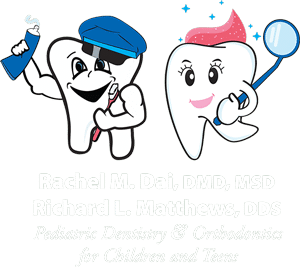9 Simple Techniques For Legacy Orthodontics
9 Simple Techniques For Legacy Orthodontics
Blog Article
The Buzz on Legacy Orthodontics
Table of ContentsThe 6-Second Trick For Legacy OrthodonticsLegacy Orthodontics Can Be Fun For AnyoneGet This Report about Legacy OrthodonticsUnknown Facts About Legacy OrthodonticsLegacy Orthodontics Can Be Fun For Everyone
In enhancement, we provide adjustable treatment timetables, flexible repayment options and a fun, delightful experience.An orthodontist is a dentist trained to identify, prevent, and treat teeth and jaw abnormalities. They fix existing conditions and are trained to identify issues that may create in the future. Orthodontists function with individuals of every ages, from children to adults. People often link an ideal smile with good wellness.
Malocclusion, or misaligned teeth, can cause oral concerns, including dental cavity, gum tissue condition, and tough or painful chewing. But not everyone is born with straight teeth. If you have a bad bite or large areas between your teeth, you may wish to seek advice from a dental professional specializing in orthodontic care.
Legacy Orthodontics - The Facts
( Photo Credit: DigitalVision/Getty Images) Orthodontists make use of fixed and detachable dental devices, like dental braces, retainers, and bands, to transform the placement of teeth in your mouth. Orthodontic treatment is for oral irregularities, consisting of: Misaligned teethBite issues, like an overbite or an underbiteCrowded teeth or teeth that are as well far apartJaw misalignmentThe objective of orthodontic treatment is to boost your bite.
While you might believe of orthodontists as mainly for children or teens that require dental braces, they can fix dental problems at any age. Orthodontists participate in university, oral school, and orthodontic institution.
, however not all dental practitioners are orthodontists. They focus on two locations: Exactly how to properly and securely relocate teeth How to properly guide development in the teeth, jaw, and faceOnce an orthodontist has actually finished training, they have the choice to come to be board certified.
What Does Legacy Orthodontics Mean?
Misalignment, or malocclusion, is the most common reason people see an orthodontist. It is hereditary and is the outcome of size differences between the upper and reduced jaw or in between the jaw and teeth. Malocclusion results in tooth overcrowding, a twisted jaw, or uneven bite patterns. Malocclusion is normally treated with: Your orthodontist attaches metal, ceramic, or plastic square bonds to your teeth.
Some people require a headgear to help move teeth right into line with pressure from outside the mouth. A retainer is a personalized device that keeps your teeth in area.
They're most usually utilized on kids. They can produce additional space in the mouth without having to pull teeth. If you have a severe underbite that site or overbite, you may need orthognathic surgical procedure (additionally called orthodontic surgical procedure) to lengthen or shorten your jaw. Orthodontists utilize cables, medical screws, or plates to sustain your jaw bone.
You may require to see an orthodontist if you have: Crowding or otherwise adequate room for all of your teethOverbite, when your upper teeth come your bottom teethUnderbite, when your base teeth are as well far forwardSpacing or issues with gapsCrossbite, which is when your top teeth fit behind your base teeth when your mouth is closedOpen bite or a vertical space in between your front base and upper teethMisplaced midline, when the facility of your bottom and upper teeth don't line up Remedying an oral malocclusion can: Make biting, chewing, and talking easierImprove the proportion of our face and your total appearanceEase pain from temporomandibular joint conditionsSeparate your teeth and make them much easier to cleanse, aiding prevent tooth decay or cavities It's often a dentist who first notices misaligned teeth throughout a routine examination.
Everything about Legacy Orthodontics

Throughout your initial orthodontic consultation, you'll likely have: A dental examPhotos taken of your face and smileDental X-raysPanoramic (360 degree) X-rays of your face and headImpressions to create molds of your teethThese examinations will certainly assist your orthodontist recognize how to wage your treatment. clear braces. An orthodontist is a dentist who's had training to treat your teeth and jaw
An orthodontist is focused on your bite, so something like a cracked tooth would be managed by a dental expert. Orthodontists are focused on your bite, or the way your teeth fit with each other, and the straightness of your teeth.
Ever asked yourself just how celebs always seem to have completely lined up teeth? The solution commonly depends on the knowledgeable hands of an orthodontist. However exactly what does an orthodontist do? Orthodontists are dental professionals that concentrate on correcting abnormalities in the teeth and jaws. Their proficiency exceeds simply developing a lovely smile; it reaches enhancing your total dental wellness and feature.
The 9-Minute Rule for Legacy Orthodontics

, orthodontists have a diverse toolkit at their disposal. These reliable braces use a system of brackets bonded to the teeth and attached by cords.
Clear aligners, like Invisalign, are a preferred alternative for patients seeking a much more discreet treatment alternative. These detachable trays are personalized to progressively change the teeth's placement. Headgear may be utilized combined with dental braces or aligners to apply extra targeted forces, especially for remedying jaw disparities. In instances of slim jaws, palatal expanders can be used to produce area for appropriate tooth placement.
Report this page